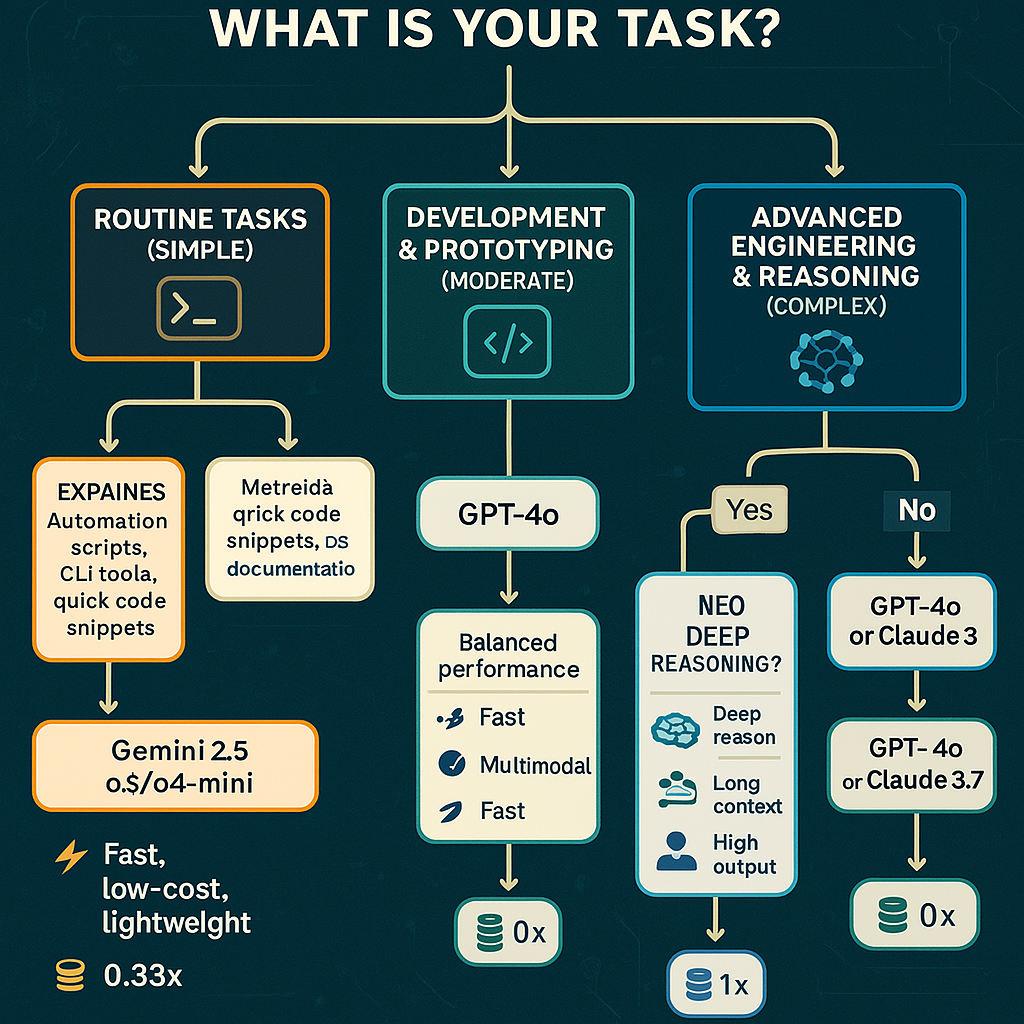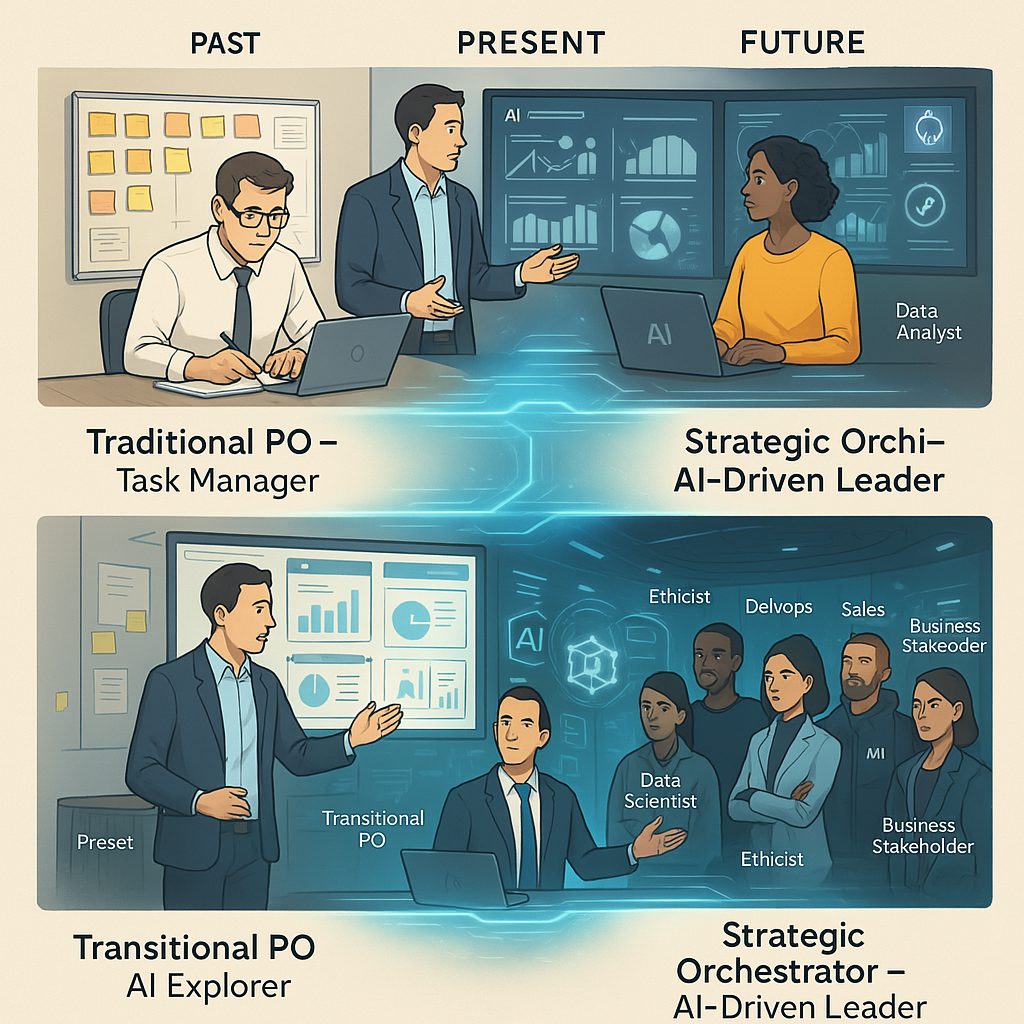-
Getting the Most from GitHub Copilot and AI Models - Boost Productivity While Managing Costs
🤖 The Day My AI Assistant Became Smarter Than Me (And Cheaper Too)
“Hey Copilot, write me a function to…”
Does this sound familiar? You reach for the most powerful AI model every time—whether you’re naming a variable, writing quick documentation, or adding a simple code comment. Claude 4 for everything. GPT-4 for the basics. Premium models, always on.
It’s like driving a Ferrari just to check your mailbox.
What changed for me? I stopped treating AI like a one-size-fits-all hammer and started seeing it as a toolbox—each model with its own strengths.
That was my turning point. Once I matched the right model to each task, my productivity soared and my costs dropped dramatically.
In this post, I’ll share the practical framework I use to choose the best AI model for every job—so you can avoid overkill and get the most value from your tools.
Ready to turn your AI chaos into a cost-effective, productivity-boosting machine?

-
The Evolving Role of the Product Owner in the Age of AI
I’ve been thinking about this a lot lately. As someone who’s worn both the Technology Architect hat and stepped into Product Owner shoes for a few technical product deliveries, I’ve watched this transformation happen in real-time—and honestly, it’s been fascinating and terrifying in equal measure. I thought my technical background would prepare me for everything. I was wrong.
The landscape of product ownership has shifted dramatically over the past few years, and if you’re not feeling at least a little overwhelmed by the pace of change, you might not be paying attention.

This is my honest take: the future belongs to Product Owners who understand that AI isn’t just another feature request—it’s a fundamental shift in how we build products.
-
Supercharging Code Reviews with AI for Strategic Impact
Manual code reviews, though vital for quality and security, often become a bottleneck—slowing delivery and hiding critical issues. In my work as a cloud engineer and solution architect, I’ve seen how drawn-out PR processes create gaps that lead to rework, delays, and compliance risks. Organizations must balance strict governance with fast innovation, but manual reviews alone struggle to keep pace, escalating technical debt and regulatory exposure.
Enter AI-driven code review—an intelligent, adaptable solution that automates policy checks, enforces standards, and surfaces insights instantly in every pull request.
By integrating Azure OpenAI into your CI/CD pipeline, you can automate repetitive checks, enforce custom rules at scale, and empower your teams to focus on strategic design and innovation.
In this post, we’ll explore how a customized AI code reviewer delivers clear ROI for decision-makers: reducing review cycle times, strengthening compliance posture, and providing actionable insights. You’ll learn how to seamlessly integrate the tool into your existing workflows and tailor it to your enterprise needs, ensuring both speed and governance go hand in hand.
-
Branch Protection as Code Enforce GitHub Security at Scale
Target Audience: Sales engineers, solution architects, and design decision-makers looking to secure their code repositories at scale.
In today’s fast-paced DevOps world, manual branch protection is a recipe for drift, inconsistency, and risk. As teams and codebases scale, relying on the GitHub portal for configuration becomes unmanageable and error-prone. Automation ensures every repository—old or new—remains secure, compliant, and up-to-date, with zero manual effort.
-
Governance Layer Best Practices in GitHub
As a DevOps engineer who’s implemented governance across numerous repositories, I’ve learned that robust policies and automated controls are essential for security, compliance, and collaboration. In this post, I’ll share proven best practices—leveraging both GitHub Enterprise and the Free tier—to enforce branch protection, define clear code ownership, and automate compliance checks. Whenever Enterprise-only features appear, I’ll provide practical workarounds for Free-tier environments.
-
Deploy and Configure SonarQube
In this post, I will walk you through some of the best practices that helps you to complete post deployment configuration of SonarQube.
-
Azure Bastion
Organizations always have issues and concerns that how to remove the risk of threats and malware attacks when users connect to VMs (using RDP or SSH) inside the network.
Azure Bastion not only helps you to address these issues, but also reduce the lot of management overhead. In this post we will discuss the concepts and how to configure it.
-
DevOps Attitude
DevSecOps is not meant to fail if Processes, Products backed by People with the right attitude followed by continuous learning and improvements is in place. It’s not very important how the journey starts but how consistently it improved over time.
There are a lot of fundamental principals that need to consider while you are defining the Organizations DevOps road map. But in my opinion, the following two lay the foundation of success.
- DevSecOps is not a Role
- Open by Default, Closed by Exception
-
Secure secretes in Azure DevOps Pipelines
Secure secretes in Azure DevOps Pipelines using Azure Key Vault
Security is an integral part of the Application Life Cycle Management and must be implemented right from the beginning. Its everyone’s responsibility to ensure security compliance in every process and each phase.
In this post, I will talk on how to ensure security in terms of Key, Secrete, Certificate management as part of your Azure DevOps pipelines (YML based).
-
Securing Azure Network - 101
Security is a shared responsibility. It needs to be considered in each layer and at every component level. Even smaller negligence may cause damage to users, vendors, and clients.
If you are preparing for Azure Certifications (AZ-300) or new to designing space, I hope this post will help to start with fundamentals. In this post, I will talk about the basic design principle and considerations around Network security.

Ajeet Chouksey
- Getting the Most from GitHub Copilot and AI Models - Boost Productivity While Managing Costs
- The Evolving Role of the Product Owner in the Age of AI
- Supercharging Code Reviews with AI for Strategic Impact
- Branch Protection as Code Enforce GitHub Security at Scale
- Governance Layer Best Practices in GitHub
- Deploy and Configure SonarQube
- Azure Bastion
- DevOps Attitude
- Getting the Most from GitHub Copilot and AI Models - Boost Productivity While Managing Costs
- The Evolving Role of the Product Owner in the Age of AI
- Supercharging Code Reviews with AI for Strategic Impact
- Branch Protection as Code Enforce GitHub Security at Scale
- Governance Layer Best Practices in GitHub
